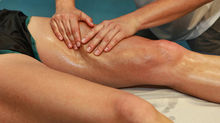It's tennis season...and that means an influx of Shoulder injuries
- The Studio Team
- Feb 8, 2021
- 1 min read

With the Australian Open about to kick off, we can’t help but talk about shoulders and shoulder injuries! This is the time of year many of us pick up a dusty racquet and hit the court potentially after a decent hiatus. It’s shortly after returning to the court that we tend to see rotator cuff injuries walk through our door. Why you ask? More often then not these presentations are due to a progressive and somewhat sudden overload of the rotator cuff (the group of small muscles that stabilise the shoulder). After a break from certain activities due to holiday/work commitments/motivation these muscles tend to lose condition and often aren’t quite up to the task of a solid 3 Set Match after such a break.
When breaking down the demands of the sport at hand it’s hard to look past the tennis serve. Of all the tennis strokes, it’s the serve that requires the most energy. The service action is in fact one of THE most energy - demanding motions in sport in general. The service action accounts for 45-60% of all strokes performed in a tennis match - which no surprises puts the shoulder in a high risk position for injury without proper conditioning and effective execution.
First line treatment for a grumpy rotator cuff injury generally consists of conservative management with load management modifications, and a specific rehabilitation programme. Rehab will be geared towards identifying any potential weaknesses in the shoulder complex, addressing these with a graduated strengthening regime very much focusing on the sport specific demands required to serve up your next ace!





























Comments